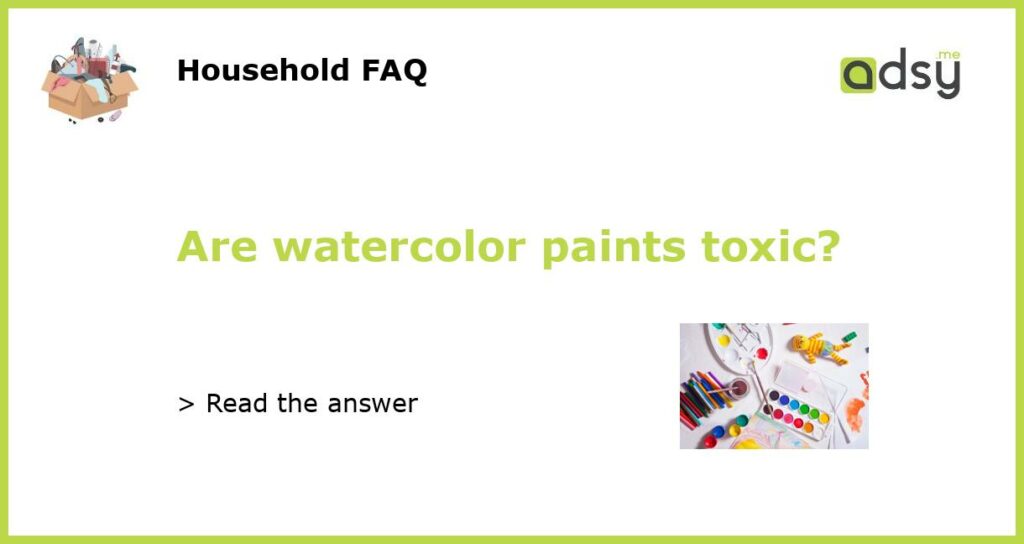Watercolor Paints: A Non-Toxic Artistic Option
Watercolor painting is a beloved art form that is often praised for its vibrant colors and fluidity. However, when it comes to choosing art supplies, safety is always a concern. Many artists wonder if watercolor paints are toxic and if using them can pose any health risks. In this article, we will explore the composition of watercolor paints, the potential hazards they may present, and whether or not they are a safe choice for artists.
The Composition of Watercolor Paints
Watercolor paints consist of pigment particles suspended in a water-soluble binder. The pigments used in watercolor paints can be either organic or inorganic compounds, and they are responsible for the paint’s color. The binder, usually gum arabic, helps hold the pigments together and allows them to adhere to the painting surface.
Potential Hazards of Watercolor Paints
While watercolor paints are generally considered non-toxic, it’s important to remember that some pigments may still pose health risks. Certain pigments can be irritants to the skin, eyes, and respiratory system if they come into direct contact or are inhaled as dust. Artists should always be cautious when handling and working with pigments, regardless of their toxicity level.
Additionally, some watercolor paints may contain additives or preservatives that could be harmful if ingested. These chemicals are typically present in very small amounts, but it’s essential to read the product labels and follow the manufacturer’s safety guidelines to minimize any potential risks.
Choosing Non-Toxic Watercolor Paints
If you are concerned about the toxicity of watercolor paints, you can opt for those labeled as “non-toxic” or “AP certified non-toxic.” These designations indicate that the paint has undergone testing and meets specific safety standards established by the Art & Creative Materials Institute (ACMI). The ACMI is an organization that ensures art supplies are safe and non-toxic for consumer use.
When purchasing watercolor paints, it’s also important to consider the quality and reputation of the brand. Respected art supply manufacturers often prioritize the use of high-quality, non-toxic ingredients in their products. Doing research and purchasing from reliable brands can help ensure that the watercolor paints you use are safe for artistic endeavors.
Practicing Safe Techniques
Even when using non-toxic watercolor paints, it’s important to practice proper safety techniques to minimize any potential risks. Here are a few tips to keep in mind:
- Wear protective gear such as gloves and a mask if you are mixing or handling pigments directly.
- Avoid ingesting watercolor paints and always wash your hands thoroughly after using them.
- Ensure that your working area is well-ventilated to reduce inhalation of any dust particles.
- If you experience any adverse reactions or health issues while working with watercolor paints, seek medical attention immediately.
In general, watercolor paints are considered safe and non-toxic for artistic use. However, it’s important to exercise caution and take necessary safety precautions when working with any art supplies. Choosing non-toxic watercolor paints and using safe techniques will help ensure a healthy and enjoyable artistic experience. Remember to always prioritize your well-being when pursuing your artistic passions.






